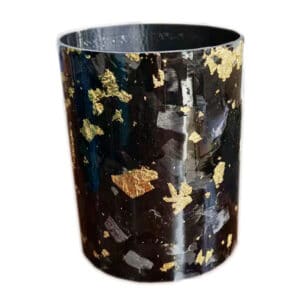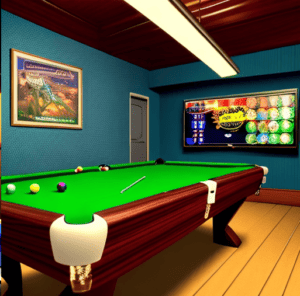Carbon Fiber Tube Manufacturer
Carbon fiber tubes are making their way into the market and replacing aluminum. Do you know the reasons and find the better Carbon Fiber Tube Manufacturer?
So the carbon-fiber tubes are stiff yet lightweight. It’s always making them ideal for industry experts and hobbyists. Due to their properties, these tubes have a wide range of applications. In most situations, Carbon-fiber tubes with less weight than aluminum. CF Tubes can have higher or constant strength characteristics.
The property has made carbon-fiber tubes applied in industries. Such as aerospace, recreational sports, and race cars, where lightweight is vital. We design carbon-fiber tubes in various shapes, including squares, circles, and rectangles.
Besides, they can be fabricated into other forms. Such as hexagonal, oval, octagonal, elliptical, and custom shapes.
The square and rectangular profiles offer greater rigidity to structures and are known as box beams.

Uses of Carbon Fiber Tubes
Carbon fiber tubular structures have unique properties.
These tubes have a myriad of applications. They replace the commonly used metals like steel, aluminum, and titanium in applications where weight is critical.
Carbon tubes weigh less, approximately one-third of the weight of the aluminum tubes.
We manufacture carbon-fiber tubes here in China. Thus, we have complete control over the quality and characteristics of the tubing.


Properties of Carbon Fiber Tube
Our carbon-fiber tubes have unique properties that are preferred in most industries over other materials. These include:
Excellent resistance to fatigue; High strength and stiffness to weight ratio;
The tubes have a low thermal expansion coefficient hence have better dimensional stability;
High corrosion resistance; Chemical resistivity; X-Ray transparency; Chemical resistivity
TORAY Carbon Fiber Selector Guide


Standard Modulus Carbon Fibers

Intermediate Modulus Carbon Fibers

High Modulus Carbon Fibers

Important features of TORAY carbon fiber products include
- The broadest product line available. It’s including the highest strength and stiffness fibers available in the marketplace.
- Minimal deformation due to thermal effects. With coefficients of thermal expansion in the axis direction on the order of -0.4 to -1.0 x10-6/K.
- Electrical conductivity and transparency to X-ray radiation.
- Acid, alkali, salt, and solvent resistance.
- Versatility to be a method using a mode of composite process ways. Such as well as weaving, braiding, prepregging, filament winding, pultrusion, chopping, and milling.
- Manufacturing under ISO 9001 quality assurance systems. With identical product manufacturing specifications, regardless of the location of manufacture.
Carbon Fiber Tube Characteristics
Manufacturers can combine the suitable fibers, process, and fiber orientation to fabricate tubes. They’re with the ideal characteristics for any application.
These features include:
· Materials: Manufacturers can create tubes. They’re from ultra-high, high, intermediate, or standard modulus carbon fiber.
· Diameter: You can use carbon-fiber tubes with small and large diameters. The diameters can be metric or fractional sizes.
· Taper:
To make sure revolutionary stiffness alongside the duration of the structures, they may be tapered.
· Length: There are different standard lengths of roll-wrapped carbon-fiber tubes. But, a client can also get custom lengths for particular needs if one requests a longer tube length. Designers can join many tubes with internal splices to fabricate a longer tube.
· Exterior materials: Prepreg carbon filter tubes allow users to select various exterior layers.
They will even be needed to settle on the exterior color in some instances.
· Wall thickness: Some carbon fiber tools can also be fabricated to any wall thickness. By combining layers of different pre-preg layers.
· Exterior and interior finish: Prepreg carbon tubular structures have a cello-wrapped gloss finish. But you can also find carbon-fiber tubes with a smooth, sanded finish. Braided carbon-fiber tubes have a wet-looking and shiny finish. But you can cello-wrap them to get a glossier finish. If you want better bonding, you can apply a texture.

Applications of Carbon Fiber Tube
Carbon-fiber tubes are lightweight. It has superior strength high stiffness. And the fabrication process, shape, length, color, and diameter. Some of the common uses of carbon-fiber tubes today are:
·Telescoping poles; Guitar necks; Formula 1 structural parts like race car components; Metrology instrumentation; Telescopes; Industrial machinery; Bicycle tubes; Drone components; Tactical ladders; Kayak paddles; Aerospace spars and beams; Trusses; Robotics and automation; Lightweight drums; Idler rollers; Arrow shafts
Processes of Manufacturing Carbon Fiber Tubes
It is challenging to manufacture hollow composite structures. Because experts need to apply pressure on the internal and external laminate sides. The manufacturing process of carbon filter fabric and tow is complex and energy-intensive.
Carbon atoms are aligned, subjected to high heat, and coated with a particular chemical to help stick resin during the process.
When you look at a composite tubing cross-section, you may think it is constructed from a single piece. The finished product is a single piece because all the materials have been bonded using resin and curing. But the tubing section did not start as a one-piece. We combined several layers of fiber and fabric to make a single-piece tube.
The four significant processes are used in the manufacturing of carbon tubes. They are Roll warping; Filament winding, Pultrusion, Pull Braiding.
Roll Wrapping
Roll wrapped carbon fiber tubes are created using several wraps of unidirectional fabrics.
The roll wrapping process is done on pre-preg products. To ensure the most excellent consistency across fiberglass and carbon fiber tubing.
Pre-pregs are composite products. They were compromising fiber or fabric with epoxy resin to hold the pieces together. Manufacturers cut pre-preg material into layers with varying fiber orientations. Then rolled into a cylindrical rod referred to as a mandrel.
Then the pre-preg and mandrel are wrapped in a plastic film containing epoxy resin. And the layers are compressed during curing.
We then remove the mandrel from the center of the finished tube once the curing process is complete. Roll wrapping allows more customization options for mandrel and fiber production quantity and configuration.
The process is best suited for manufacturing small runs of tubing.
Rolled tubes are suited for applications. It needs greater bending stiffness and low weight like idler rollers, robotics, and UAV components.
Roll-wrapped pre-preg tubular structures with longer lengths. They are ideal for high and ultra-high modulus applications.
Filament Winding
The filament winding process is more automated than roll wrapping. So it is cost-effective to produce oversized carbon fiber tubing within the shortest time. Filament wound tubing is cheaper and has excellent properties.
If you want to increase strength in all directions, filament winding is effective. But, filament winding makes customization harder. And the winding machine length limits the process.
The fiber and resin are mixed and matched in the winding equipment in roll wrapping rather than during the prepregging process making customization easier.
In this process, producers begin with a tow of carbon fiber, fiberglass, or carbon fiber-fiberglass composite.
The composite tow is loaded onto many spools located at the winding machine’s back. While the mandrel, which has a tubing form, is found at the front of the device.
The carriage on the winding equipment moves up and down as the mandrel spins to create the tubing.
According to customer requirements. The tows applied on the mandrel form a spiral pattern, and the spiral angles and the number of spirals.
Pultrusion is a term. It comes from the combination of two principles: pulling and extrusion.
Pultrusion
Through a die by pushing, pultrusion achieves the same results by pulling material through the die.
First, the technician will affix a chromed steel rod on the side where the material enters the die. They then install the mounting hardware away to prevent fiber interference as it enters the die. Experts create pultruded tubing by pulling fiberglass or carbon fiber tow. Through a heated die while impregnating it with epoxy resin.
During the process, the manufacturers pull the material over a floating mandrel. The mandrel serves the purpose of holding the material’s shape during curing.
Pultrusion is advantageous since it produces continuous and unidirectional fiber tubes.
Pultrusion is more automated; hence it is more cost-effective for composite profiles. Additionally, the process allows manufacturers to fabricate tubing with different lengths and thicknesses by simply switching the die and the mandrel. Most times, length restrictions come about during transportation.
The thickness of the finished carbon-fiber tube is determined by the spacing between the die and the mandrel.
Pultrusion also has some downsides. One of the cons is that the tubing can easily split due to torsion or compression.
The reason is that the process causes fibers to orient along the tube’s axis.
When the fibers are aligned in one direction, the tube will have greater tension, but its cross-directional and hoop strength will be lower.
Pull Braiding
Pullbraiding was invented in a quest to develop an automated process that can fabricate balanced tubes. Pullbraiding extends the pultrusion process. Both methods produce finished products with a high strength-to-weight ratio and greater stiffness.
Yet, pullbraiding has one added feature that makes it helpful over pultrusion.
In pullbraiding, we braid the fibers together as they are pulled through the die and onto the mandrel.
Varying the braid allows for the formation of different angle layers, and you can also insert unidirectional lays in the fibers.
Pull Braiding produces well-balanced carbon-fiber tubes. That performs under a wide array of loads. Moreover, it creates tubing with added aesthetics since the braids look more like traditional carbon-fiber tubes.
Thus, pullbraided tubs are less expensive than roll wrapped or filament wound tubular structures.
Pull Braiding fabricates braided carbon-fiber tubes. They consist of unidirectional and carbon fiber braid fabrics. Braided tubing offers a variety of benefits, like excellent torsional characteristics. High crush strength and is perfect for high torque applications.
Braided carbon tubes come in many different shapes, such as square, rectangular, and round. Further, we can use high modulus carbon fibers to increase bending stiffness.
Large Diameter Carbon Fiber Tubes
We also manufacture large diameter carbon-fiber tubes comprising rolled bi-directional woven carbon fiber. We design these tubular structures for large applications like lightweight drums and telescoping. What’s more, our large-diameter tubing has a textured finish on the interior and Exterior for easy bonding.
The processes named above are not the only ways of manufacturing carbon-fiber tubes. Other manufacturing processes include bladder molding, compression molding, and autoclave processing. Each method has its advantages and disadvantages.
Comparison Between Carbon Fiber and Aluminum
Carbon-fiber tubes have been replacing aluminum in various applications in the past few decades.
Carbon fiber strands are mixed with resins to make composite materials with excellent properties.
The tubing takes advantage of the better properties of fiber and resin.
When comparing the carbon fiber and aluminum, we look at the following properties:
· Modulus of elasticity: It is the ratio of the stress and strain of material. The slope on the stress versus strain curve in the elastic region is the Modulus of elasticity.
· Density: It is the ratio of the mass of a material to its volume.
· Specific stiffness: It compares materials with different densities.
Thermal Properties Comparison of Carbon Fiber and Aluminum
Thermal conductivity and thermal expansion are different properties. That differentiates carbon fiber and aluminum materials. Thermal expansion refers to how the dimensions of a material change with varying temperatures. The thermal expansion of aluminum is six times more than carbon fiber.
Pros and Cons of Carbon Fiber and Aluminum
Engineers need to determine the material properties.
That is most critical for particular specifications when designing composite materials.
Carbon fiber is the perfect choice in applications. Where high stiffness and strength-to-weight ratio matter. Designers consider carbon fiber as an excellent building material. Carbon fiber has a lower thermal expansion which has significance like telescopes and 3D scanners. Using carbon fibers also has a few disadvantages: it does not yield. Once carbon fiber exceeds its ultimate tensile strength, the material will fail. Manufacturers need to understand this aspect. So that they include a safety factor when using the material to design products. Carbon fiber parts are more extensive than aluminum because of high production costs. Also, the production of top-quality carbon parts requires excellent skills and vast experience.
Machining of Carbon Fiber
Composite materials machining is different from conventional materials. Unlike in other materials, machining carbon fiber requires specialized tools and techniques. We have many years of experience in machining composites. Such as pro-taper tubes and other products. Our capabilities for carbon fiber machining are · CNC lathe machines with tools for producing complex mandrels and finishing tubes · Pressure paint booth · Carbon-fiber tube finishing tools like sanding equipment and precision grinders · Machining centers capable of performing CNC machining.
Carbon Fiber Frequently Asked Questions
Here are some of the most commonly asked questions on our page:
How do you Measure the Diameter of Your Tubes?
Apart from pultruded carbon tubes whose diameter is measured from the outside, all our tube’s diameters are measured from the inside.
You can determine the outside diameter by adding two times the wall thickness to the internal diameter measurement.
What Finishing Options do you do for your Carbon Fiber Tubes?
We have various finishing options for our tubes, including gloss, tooled, natural, and textured. The finish we choose depends on the type of carbon-fiber tube. Additionally, we offer sanded finish to customers upon request.
How Should I Cut Your Carbon-Fiber Tubes?
Our carbon-fiber tubes are pre-cut to desired lengths, though sometimes they may be oversized. You can cut the length easily using a dremmel, bandsaw, or a coping saw.
We recommend certain precautions when cutting, sanding, or drilling the tubes. These include wearing a dust respirator, protective clothing, and safety glasses. This personal protective equipment will minimize exposure to dust and other irritants.
Do You Offer Custom Cutting Services of Carbon-Fiber Tubes?
Yes. We can cut the tubes to your specified length. Contact us for more information.
Our company manufactures carbon-fiber tubes for a wide range of applications. We incorporate several manufacturing processes to produce tubing with varying diameters and lengths. Are you in need of carbon-fiber tubes?
Our experts use the latest techniques and high-quality pre-preg materials to guarantee higher fiber and low voids production. Visit our site or contact us to learn more about our products and services.
-
How to Elevate Billiard Carom Game To New Heights In 2023 With Carbon Carom Tubes?
Dive into the innovative world of billiards in 2023 and discover how Carbon Carom Tubes are transforming the carom game. Learn expert strategies and techniques to elevate your game to new heights.
-
The Best Carbon Fiber Tube Manufacturers in 2023
Dive into the world of advanced material science as we explore the top carbon fiber tube manufacturers leading the way in 2023. Discover their innovative processes, diverse applications of carbon fiber tubes, and the visionary future they’re shaping in the industry.
-
Unlock Superior Performance: 2023’s Best 15 Pool Cue Tips
Unlock superior performance in your pool games with our guide to the best 15 pool cue tips for 2023. From understanding the role of a good cue tip to detailed reviews and maintenance tips, this comprehensive guide has everything you need to elevate your game.


















